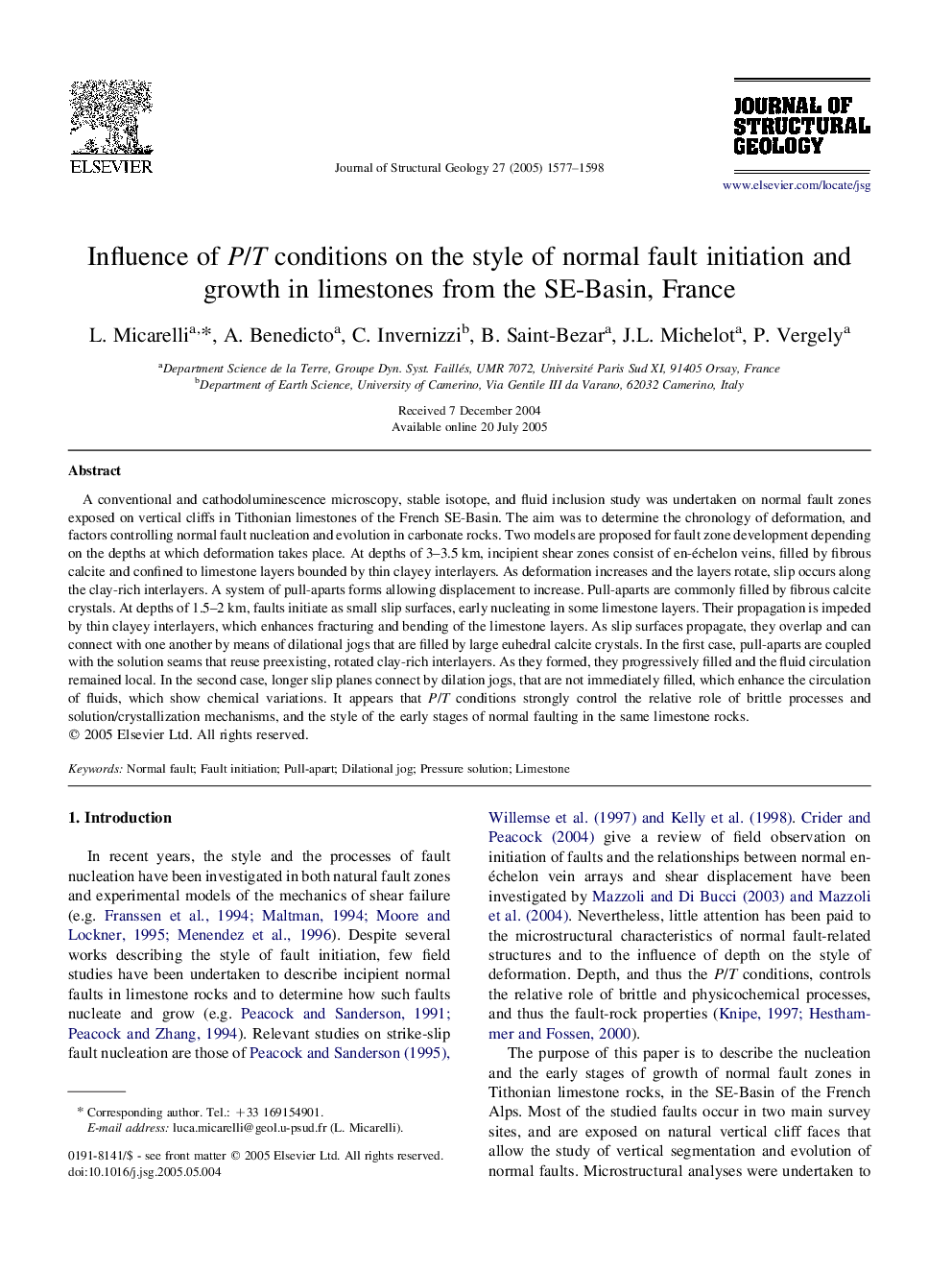| Article ID | Journal | Published Year | Pages | File Type |
|---|---|---|---|---|
| 9536177 | Journal of Structural Geology | 2005 | 22 Pages |
Abstract
A conventional and cathodoluminescence microscopy, stable isotope, and fluid inclusion study was undertaken on normal fault zones exposed on vertical cliffs in Tithonian limestones of the French SE-Basin. The aim was to determine the chronology of deformation, and factors controlling normal fault nucleation and evolution in carbonate rocks. Two models are proposed for fault zone development depending on the depths at which deformation takes place. At depths of 3-3.5Â km, incipient shear zones consist of en-échelon veins, filled by fibrous calcite and confined to limestone layers bounded by thin clayey interlayers. As deformation increases and the layers rotate, slip occurs along the clay-rich interlayers. A system of pull-aparts forms allowing displacement to increase. Pull-aparts are commonly filled by fibrous calcite crystals. At depths of 1.5-2Â km, faults initiate as small slip surfaces, early nucleating in some limestone layers. Their propagation is impeded by thin clayey interlayers, which enhances fracturing and bending of the limestone layers. As slip surfaces propagate, they overlap and can connect with one another by means of dilational jogs that are filled by large euhedral calcite crystals. In the first case, pull-aparts are coupled with the solution seams that reuse preexisting, rotated clay-rich interlayers. As they formed, they progressively filled and the fluid circulation remained local. In the second case, longer slip planes connect by dilation jogs, that are not immediately filled, which enhance the circulation of fluids, which show chemical variations. It appears that P/T conditions strongly control the relative role of brittle processes and solution/crystallization mechanisms, and the style of the early stages of normal faulting in the same limestone rocks.
Related Topics
Physical Sciences and Engineering
Earth and Planetary Sciences
Geology
Authors
L. Micarelli, A. Benedicto, C. Invernizzi, B. Saint-Bezar, J.L. Michelot, P. Vergely,
